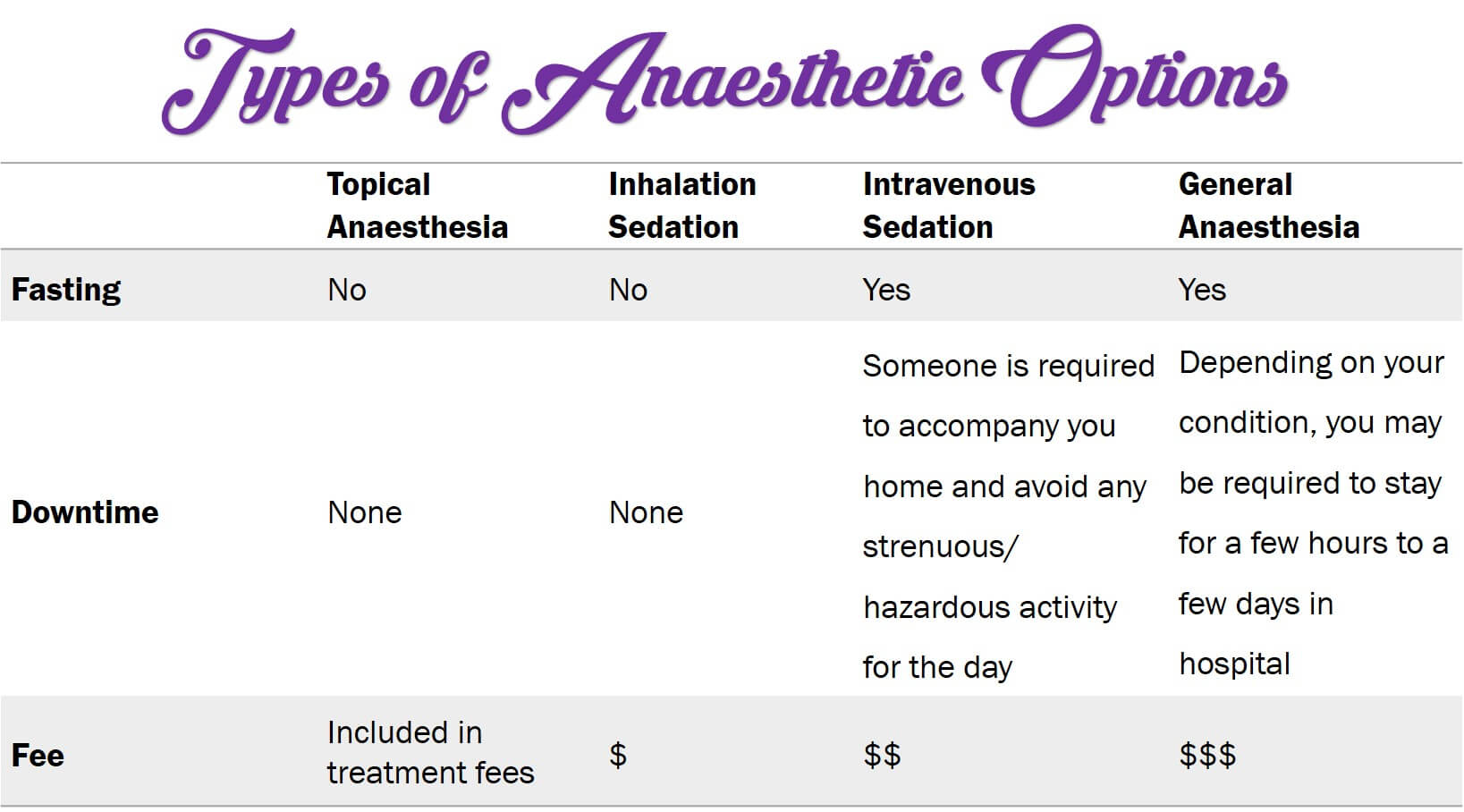Higher levels of dental anxiety and fear of pain are found to be associated with a lower likelihood of receiving dental treatment and greater delay in obtaining dental care. These affects one’s oral health negatively and increases the possibility of having decayed or missing teeth. However, all these can be prevented as modern dentistry has various ways to control or eliminate the discomfort felt during dental treatments.
In this blog post, we will be covering four types of anaesthetic options available. The first two types are administered by the dental specialists themselves, while the third and fourth options are administered by professional anaesthetists.
Topical anaesthesia
Also known as “numbing gel”, this is used to numb your gums and surrounding tissues to reduce discomfort associated with the injection of a needle (local anaesthesia). After application, it would be left on for about a minute before the injection is given.
Inhalation sedation
Nitrous oxide, also known as “laughing gas” or “happy gas”, is inhaled through a rubber face mask to help the patient feel relaxed. This gas has no colour and no smell and would take effect after breathing it in for about 5 minutes. During the process, you will feel a tingling session, followed by warm sensations and then a feeling of well-being/floating.
Nitrous oxide is a very safe form of anaesthesia. There is no “hangover” effect, which means that you can recover very quickly after the gas supply is stopped and return to your daily activities (ie. driving home personally).
Intravenous (IV) sedation
Also known as “sleep dentistry”, a drug that helps you to enter into a deep state of relaxation and sleep is administered into your blood system (through the veins) before dental treatment commences. At Specialist Dental Group, we work closely with medically-trained anaesthetists to ensure that the process is as smooth as possible. The anaesthetist would be the one administering the drug as well as monitoring your vital signs such as heart rate, blood pressure and oxygen level. Hence, intravenous sedation is extremely safe when done under the right hands.
Depending on the amount of drug administered, your level of consciousness varies. For example, during the dental treatment itself, you would be sleeping. While towards the end of the procedure, when the dental specialist require you to respond to his/her requests, the amount of drug administered is lessen and you would be conscious.
IV sedation is suitable for patients who are very anxious/nervous about the dental procedure and prefer not to be aware of the process. IV sedation is also not as drastic nor costly as general anaesthesia.
General Anaesthesia (GA)
During GA, you are fully unconscious. This process is administered by medically-trained anaesthetists and can only be done in a hospital setting or specialised surgery centres.
GA is carried out when IV sedation is not suitable or when a more extensive dental procedure is done (eg. jaw surgery). This may not be suitable for some groups of medically compromised patients, hence it is important to declare your medical conditions accurately.

In order to know which anaesthetic option is most suitable for you, share your concerns with your dental specialist and he/she will advise accordingly.
With these options, everyone can take care of their dental needs with minimal discomfort!
| Need a consult with a dental specialist? Make an appointment here for a thorough checkup. Have any dental enquiries? Fill in the online form or call us at (65) 6734 9393. |





